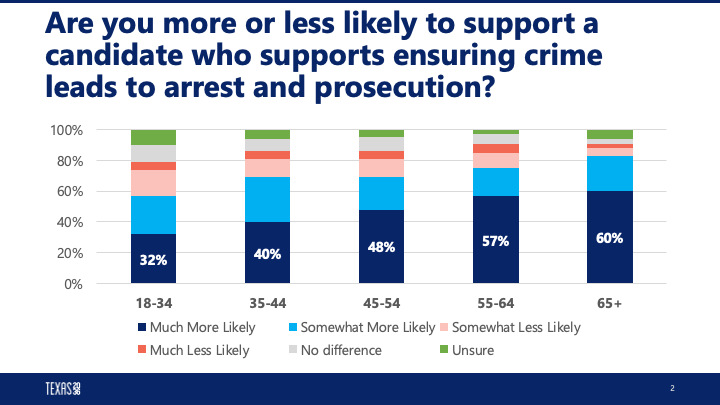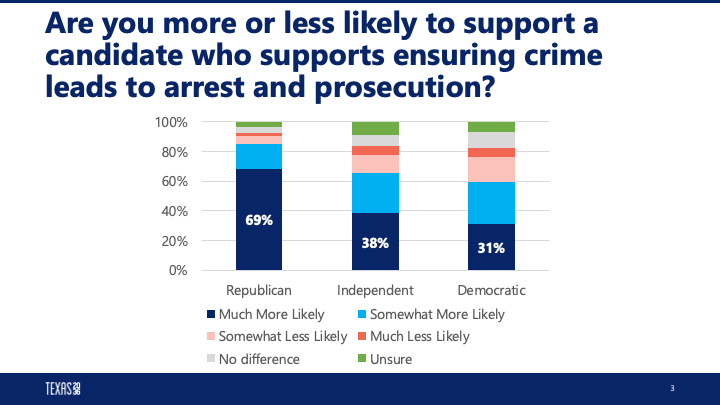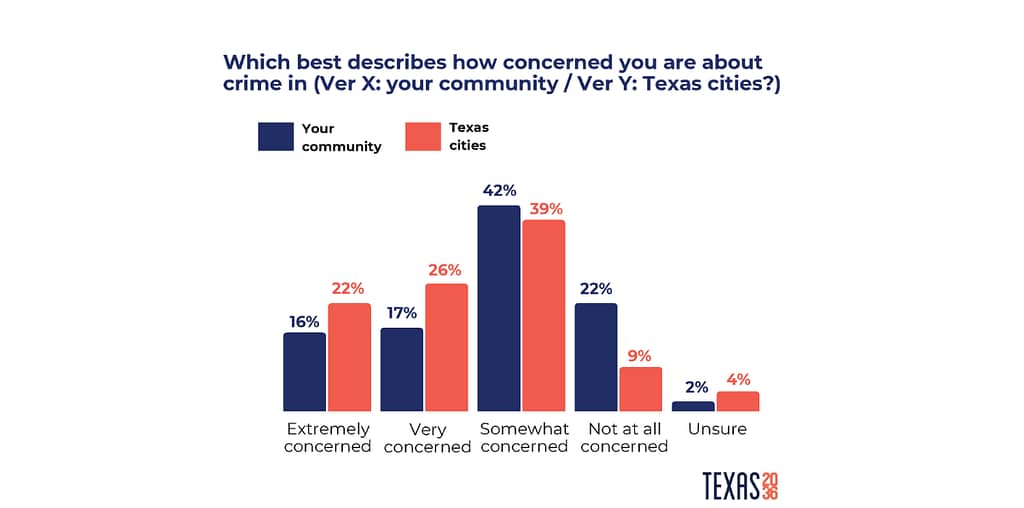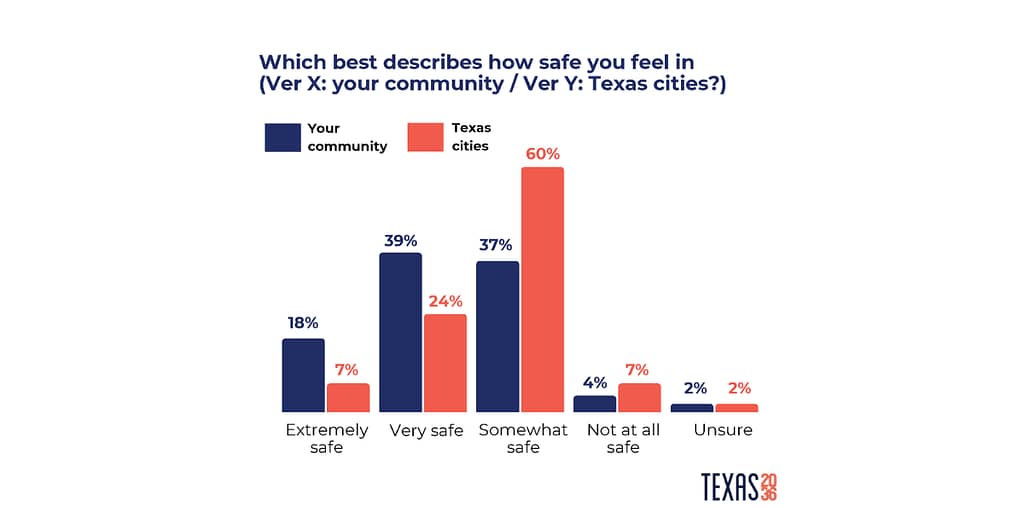Voter Poll: Texans tell us how they feel about crime and safety
With the release of Texas 2036’s 9th Texas Voter Poll, we received feedback on how Texas voters feel about issues of crime and safety. Some takeaways:
- A strong majority of Texas voters across the board prefer primary candidates who hold a position that favors ensuring that crimes lead to arrests and prosecution, but that’s much more salient for Republican primary voters than Democratic ones.
- Texas cities have a perception problem:
- Texas voters expressed some level of concern about crime (81% concerned), and that concern is larger for Texas cities (88% concerned) than in their own communities (75% concerned).
- Texas voters feel safe (93% feel safe) — more so in their own communities than in Texas cities.
- While perceptions don’t always match reality, they do affect reality.
First, we tested primary candidate positions on a number of policy topics, asking voters whether they would be more or less likely to vote for a candidate in a primary election if they held that position. One of those positions was “ensuring crime leads to arrest and prosecution”.
Across the board, regardless of race, age, party affiliation, urban/rural, or education level, Texas voters would be more likely to vote for primary candidates who hold that position, but within that support is broad variation. Most notably, that sentiment is much stronger among Republicans than Independent or Democratic voters, and much weaker among Gen Z/Millennial voters.


We asked Texas voters two versions of two questions. First, we gauged how concerned Texas voters were about crime.
Everyone expressed some concern about crime, but the degree and intensity depends largely on the geographic context, whether in their communities or in Texas cities generally.

We then asked how safe Texans feel, with their responses demonstrating a more dramatic split:

What can we take from these results?
One is that Texas voters are more than ready to support candidates who support improving the odds that crime has a definite consequence. While research has shown time and again that while increasing the severity of punishment does not deter crime, increasing the certainty of prosecution does.
Another takeaway is that we know that perceptions of crime are not always connected to crime data — at a minimum, it lags significantly.
This year, Gallup reported that 49% of Americans think there’s more crime than there was a year ago — the second consecutive year of sharp drops in improved outlooks on crime. Even still, this finding that half of Americans perceive more crime when crime rates are at historic lows (and getting lower) demonstrates a problem of perception.
Importantly, lowering crime rates doesn’t mean crime stops. There are still communities and victims that are affected by criminal activity and the policy responses to it. And we can speculate on the causes of this perception gap and take steps to address them.
In the meantime, the effects of perceived crime and insecurity can have real-world consequences in the broader economy. These negative impacts can include tourism, consumer behavior and housing prices.
Candidates should take note, not only of the perceptions that voters have on issues of crime and public safety, but on what those perceptions do to the communities they seek to represent.
